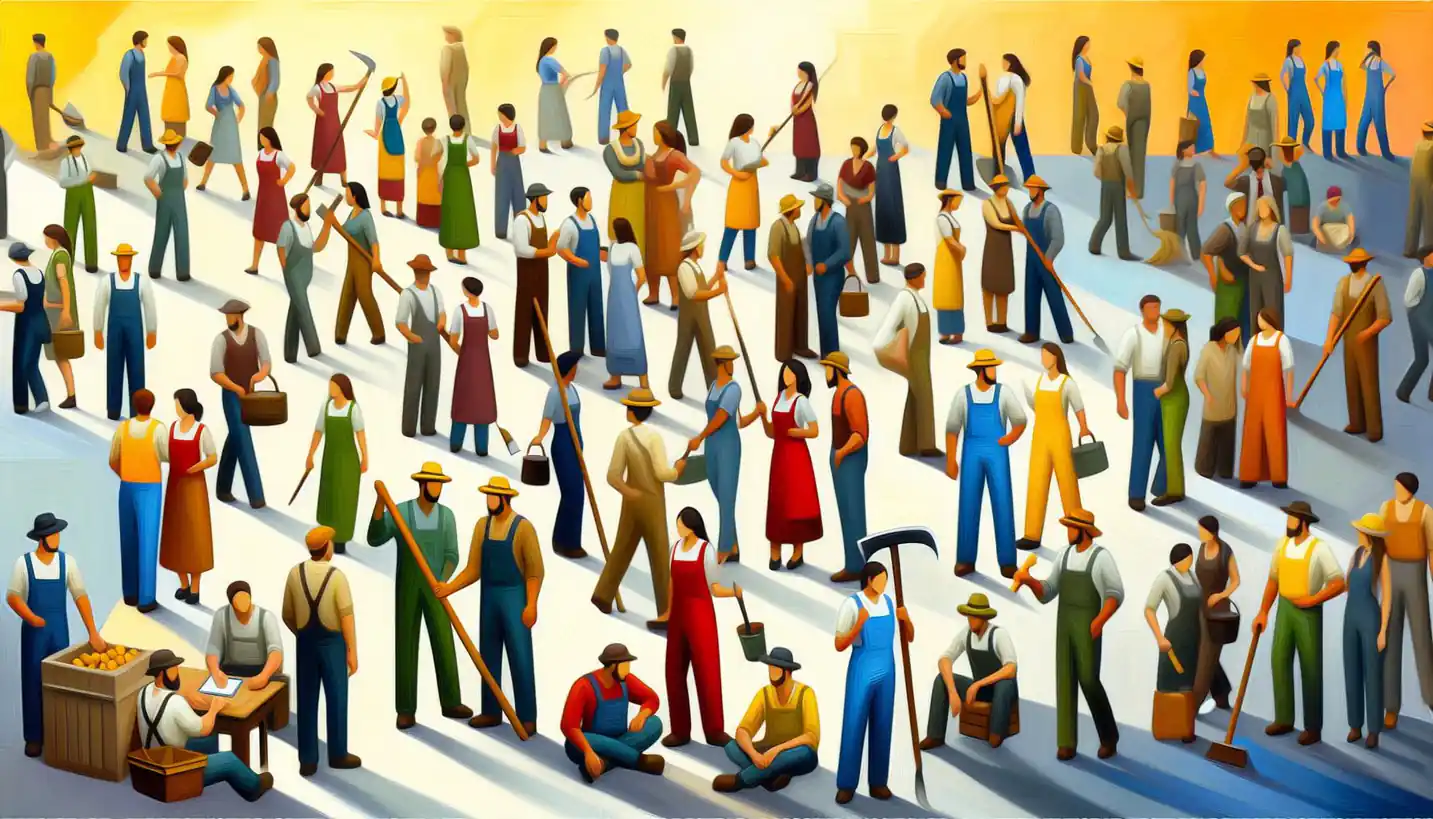· Sociology · 3 min read
Subsistence Farming: A Lifeline for Rural Communities and Sociology Insights
Subsistence farming is more than a livelihood; it’s a lifeline for many communities. Learn how it sustains families and preserves cultural traditions.

Picture a small, sun-drenched plot of land, lovingly tended by a family who relies on it for survival. This is subsistence farming—a practice where farmers grow food primarily for themselves and their families. Subsistence farming isn’t just about soil and crops; it’s deeply woven into the fabric of rural sociology. Let’s dive into how this age-old practice shapes communities and our understanding of sociology.
Subsistence farming, as the term suggests, is all about surviving on what you grow. Unlike commercial farming, where the goal is to sell produce and make a profit, subsistence farmers focus on feeding their families. Picture small plots of land, a mix of crops, and a lifestyle that’s self-sufficient but often vulnerable to the whims of nature.
In many rural areas worldwide, subsistence farming forms the backbone of life. It’s more than just growing food—it’s about maintaining a way of life that has persisted for generations. Farming becomes a community affair, with knowledge passed down through storytelling and hands-on learning. Families grow vegetables, grains, and raise livestock, creating a diverse food source that minimizes dependency on external markets.
Subsistence farming is essential in rural sociology because it offers a window into the lives of people who exist largely outside the industrialized framework. Social structures, cultural practices, and economic models in these communities are often intertwined with farming practices. The reliance on family labor, local resources, and bartering systems creates a unique social fabric that defies modern economic models.
Interestingly, subsistence farming provides a canvas to explore gender roles and relationships within rural societies. Traditionally, men and women have specific tasks—men might handle heavy labor, while women care for the garden plot. However, this division of labor is not rigid and can change based on necessity, offering a fluidity that reflects broader social dynamics.
One might wonder how technology fits into this picture. While subsistence farming is often seen as low-tech, it doesn’t mean it rejects innovation. Farmers adapt simple technologies like hand tools, seed-saving techniques, and natural pest controls to suit their needs. These innovations demonstrate resilience and a deep understanding of their environment.
However, subsistence farming faces daunting challenges. Climate change threatens to upset traditional growing patterns, impacting food security and forcing farmers to adapt quickly. Additionally, economic pressures push young people to migrate to cities, leading to a loss of traditional knowledge and weakening community ties.
Yet, there is a growing interest in sustainable farming practices, even among those who don’t rely on farming for their livelihood. The global shift towards sustainable living has sparked curiosity about methods like permaculture and agroforestry, which are rooted in principles familiar to subsistence farmers. This interest has the potential to create meaningful exchanges between urban dwellers and rural communities.
Imagine if traditional knowledge from subsistence farming could inform global food systems to create more resilient and sustainable practices. It would be a collaboration where ancient wisdom meets modern challenges—a fusion that could redefine food security on a global scale.
To enhance this understanding, rural sociologists engage with these communities, documenting practices, challenges, and innovations. By working closely with farmers, sociologists shine a light on the intricate balance between tradition and change, capturing the human aspect of farming that often goes unnoticed in larger agricultural studies.
As we explore subsistence farming, we’re reminded of its importance beyond just feeding families. It’s a reflection of human adaptation, cultural richness, and community spirit. It’s about finding balance amidst adversity, achieving unity through diversity, and preserving a connection to the land that industrialization can sometimes overlook. Subsistence farming may be simple in its goals, but its implications are vast, embodying a harmony that many seek in an increasingly complex world.



